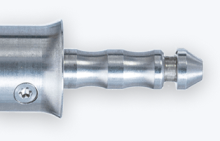
Windsurfing Competition Tips-an amateur perspective By Jeff Albright
I was lucky enough to do most of the AWT stops from 2012 to 2017. I sailed in both Amateur in the Masters fleet. Along the way, these are some of the things that I learned that helped me. Most of the contests were in Pistol River, Santa Cruz, San Carlos, and Ho’okipa.
Over the years I had a few “dawn until dusk“ days. I think the most heats I sailed in a day was seven. It doesn’t sound like much, but that is exhausting.
Having the chance to compete really improved my free sailing. It allowed me to meet many great windsurfers and make lots of new friends. Now, when I travel for windsurfing. I usually end up knowing many people on the beach. This is all because of doing these fun contests.
Tips ,Preparation ,Equipment
Bring lots- at Pistol River I have used every sail from a 5.7 down to 3.4 all in the same day
Make sure all of your stuff is compatible and fits together (does your extension fit in your mast base on every rig?)
Get it rigged early and place it where it’s useful
Is there a chance that you might change your sail in the middle of the heat? You need to put it where you can get to it.
Minimize sun exposure to your equipment- stack the sails, boards in bags…
Mind
Find YOUR ideal level of stimulation. For me, I found that I like to be very relaxed at the beginning of a heat. Some people like to get really pumped up. I just find that my energy lasts longer if I’m super mellow right before I go out. It’s different than getting ready for a sprint. (In my first contest I found myself getting exhausted from hyperventilating in a 15 minute heat.)
Relax , Work on breathing techniques.
Do you need to warm up?
If there is time in the morning, I like to get on the water early just to revive my muscle memory and tell my body that it is a windsurfing day .Then rest
Figure out your strategy for entering the water
I like to sail out for a quick run either before or at beginning of the transition just to check gear and make sure I am on the right size sail.
Understand the scoring. What is needed
How many rides/Jumps?
You will often need to give up a riding set to get a jumping set.
Understand priority and right of way. Know how to position yourself to get the waves you want (big gear).
This usually means being the most up wind and/or getting on the wave early. This is very site-specific. With good quality but rare waves and light wind, this part can be tricky.
Site
Understand the venue
Where are the waves breaking? Is that place changing with the tides. Where do you want to wait for waves? Where can you launch?
Where can you jump?
Where do you locate your gear?
It’s probably a good idea to watch the conditions one or two heats before yours, because the conditions are always changing. It helps to understand the wave frequency, and the location to get the best scores.
Watch/timing/organization
You need a Watch that has a timer function that can run on a continuous loop. You can set it first thing in the morning at the beginning of the contest. Make sure to reset it if there are any delays.
You can calculate at what time your next heat will be, and then you can switch modes on your watch to figure out how much time you have left.
Elements
In or out of wetsuit? When your body is trying to stay warm, it wastes a lot of energy. For me, if I know I have close to an hour, I will take off my suit. Much less than that, and it may not be worth the effort. It takes a lot of energy to get back into a wetsuit that's sticky with salt.
Stay warm, do you need an extra wetsuit? How long does it take to get in a wet wetsuit?
What can you wear over your wetsuit ?
Rigging jacket
Gore-Tex pants
Clothes
I tend to get sweaty a lot when rigging and running around, then cold. I find that polypropylene shirts and some sort of breathable pants are great. Cotton kills. Many times you are hot in the sun but cold in the wind. That can really tire you out if you are going to be on the beach for 10 hours.
Stay hydrated.
Bring enough water.
Drink more than you think you need
(Camelback? I always use one, but I think I’m the only one)
Food
Plan your food
Take time to eat
Understand how much time you will need between when you eat and when you go out in the water. This is probably different for everyone.
What gives you energy?
Protein? Caffeine? Water?
Sunscreen
Reapply often
Bring a big hat. Consider a “buff“ to wear over your face to keep the sun off. Don’t forget about your feet.
Shelter
It’s good to have a place to post up out of the sun and the wind. If you’re using your car, try to find a spot where you can keep track of the action, but here you are not forced to watch it the whole time. Sometimes it’s good to just zone out and not be thinking about it . If your car is not an option, maybe find a place to put a board bag in the shade where you can lie down and stretch and stay out of the sun and the wind.
Socialize vs. focus
This is probably different for everybody. I find that I need to be careful not to get too distracted hanging out with my mates, and losing track of time. It’s always fun to hang out once your heats are done.
Judging
At amateur contests, frequently there are not enough judges for the whole contest. If you have a chance to judge, you should take it. It’s really helpful to learn the process of scoring, and to understand what other people are looking for. It’s good to see how much critical positioning on the wave, and different moves score.
Photographers
At most contests, there will be several people taking pictures or shooting video. It is worth your while to get to know these individuals. All of the photographers that I have met have been super cool, and very friendly.
Because I usually sail alone, it’s hard to get images or video, and more difficult to improve. If you can get some sequences from the photographers, it can help you study and refine your technique.
It’s hard to make money as a sports photographer these days. Maybe work out a way to pay them a bit for shots. If you get a great photo, offer to buy the raw image. Maybe you can get on a subscription plan for the event or for the series. This way, you will get more pictures. This helps them make money and stay in the business, and it allows you to get some great wall art.
Attitude
Don’t take yourself too seriously. Remember, it’s just for fun. Sure, it’s fun to do well, but it seems to me like I’ve had just as much fun sometimes finishing in a lower position. For me, it was more about time on the water, and having a chance to be watched and critiqued by some very good sailors.
Once I realized that sailing in a contest is basically like being a little kid saying “hey, mom, look at me, look at me!“, it really relaxed me and I started having more and more fun.
Sponsors













